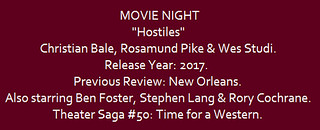Cast:
Jean-Claude Van Damme (Colonel William F. Guile), Raul Julia (M. Bison), Ming-Na Wen (Chun-Li Zang), Damian Chapa (Ken Masters), Kylie Minogue (Cammy White), Simon Callow (A.N. Official), Byron Mann (Ryu Hoshi), Roshan Seth (Dr. Dhalsim), Andrew Bryniarski (Zangief), Grand L. Bush (Gerald Balrog), Robert Mammone (Carlos Blanka), Miguel A. Núñez Jr. (Dee Jay), Gregg Rainwater (T. Hawk), Kenya Sawada (Captain Sawada), Jay Tavare (Vega), Peter Tuiasosopo (E. Honda), and Wes Studi (Victor Sagat) Written and Directed by Steven E. de Souza.
Review:
I'm sure plenty of you have at least played the video game of the same name, as originally directed by Takashi Nishiyama and designed by Hiroshi Matsumoto for release in arcades by Capcom that took inspiration from a wide variety of sources such as Enter the Dragon and various shōnen manga and anime. The release of the sequel in 1991 launched the series into the stratosphere. It did not become a surprise to see a film spring into development, one that would see Capcom serve as a co-financier and a mandate by them for a December 1994 release date that basically meant a fast production rundown. They managed to hire someone who actually liked the games with Steven E. de Souza, who envisioned his idea to do a cross between Star Wars, James Bond and a war movie that wouldn't have too many elements from the games. The Philadelphia native had gone from story editing shows like The Six Million Dollar Man to screenwriting movies such as Commando (1985) and co-writing the first two Die Hard films but had directed just one movie before: Arnold's Wrecking Co. (1973), a little-seen pot comedy. As it turned out, this would be his last film as a director. Van Damme and Julia were cast fairly quickly (the former was an actor Capcom had pictured as playing Guile for quite some time) but the rest of the actors would be comprised of unknowns (the casting of Minogue came about because Souza happened to see her on a magazine about "beautiful people" and he needed an Australian). When the filmmakers realized the extent of Julia's condition, in which he was suffering from cancer, the decision was made to shoot the intensive action scenes that did not require the actor while they got him to regain body mass, which essentially meant actors would train for their action scenes with barely any time to spare before filming., since, well, they also had to meet a strict deadline for December 1994. Troubles with the MPAA occurred where trying to go down from an R to PG-13 somehow almost resulted in a G rating with the cuts (amusingly, Capcom had decided to go into partnership with Hasbro when it came to toy-line production making shaped the film in a "G.I. Joe way"). Interestingly, it would not be the first Street Fighter movie released, as an anime adaptation of the second game, called Street Fighter II: The Animated Movie, would be released in Japan in August of 1994 with some countries also getting a theater release. While the live-action movie did have some pull with audiences, no sequel would follow despite its attempted sequel-bait. The only other Fighter film that has come out in theaters was The Legend of Chun-Li in 2009.
What a marvelous mess. The uneven nature of a movie that slogs through 102 minutes with the feeling of rushed slop is painfully apparent by the time one is even halfway through a film that can't quite find a suitable center to really get things interesting with such a miserable ensemble. The fight scenes are mediocre at best and the movie only manages to draw the smallest of interest in actually wondering just how source material like people fighting in the streets could be turned into a movie that the 1980s would've spit out for being too familiar (at least Bison Bucks is semi original?). Van Damme had a problem with certain substances to collide with a big ego during production of this film. Capcom may have thought he looked like a good Guile, but man, he really has nothing to show for it with this performance, which is bereft of general charm (unless you count ridiculous lines about balls) or impressive ass-kicking. Trying or not, he has never been so, um, funny. Even crappy movies have some interest to generate in committed actors playing the adversary, and Julia basically approaches it as if Bison was on the level of a Shakespearian figure. He accepted the role because his kids liked the games, and if that's not a good reason to have a go at something, well, think what you want. Julia died after suffering a stroke in October of 1994 after finishing production on this film. Lost in the shuffle is Mann and Chapa, who don't have much to make a suitable pair despite the obvious attempts at trying to get a good rapport. To say nothing of note about Minogue and Wen is a pretty sad thing. With lines handled with bombast such as say, "of COURSE!", you may or may not get some amusement from the camp crap that comes through in a movie that shoots itself in the foot early (one can only take so many character in-and-outs before you give up trying to follow) and never recovers. In general, the three decades that have followed its release has seen a fair share of stellar and not-so stellar entertainment based on gaming that goes to show that even the best laid plans can go down south with dubious execution such as this one.
Overall, I give it 5 out of 10 stars.



